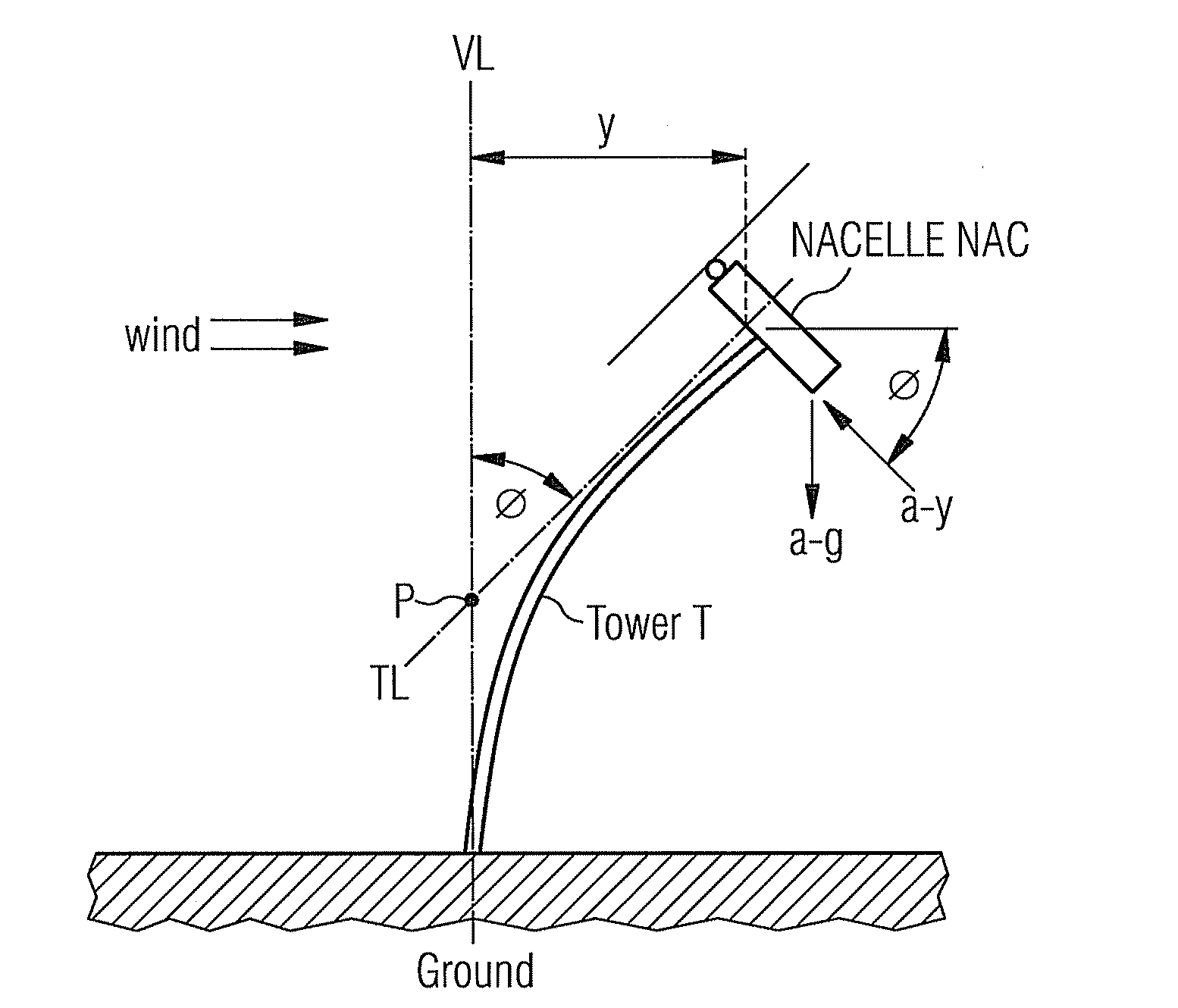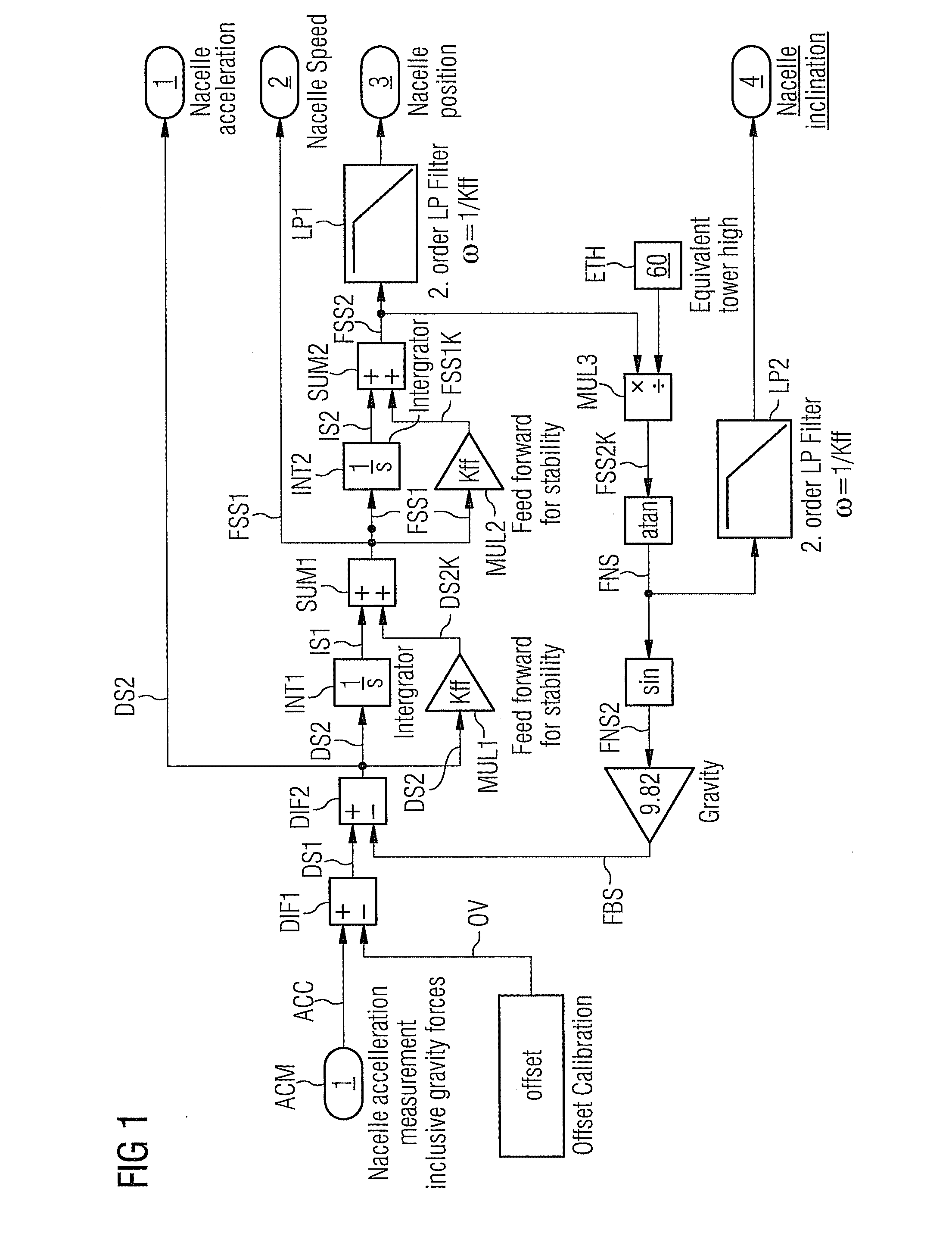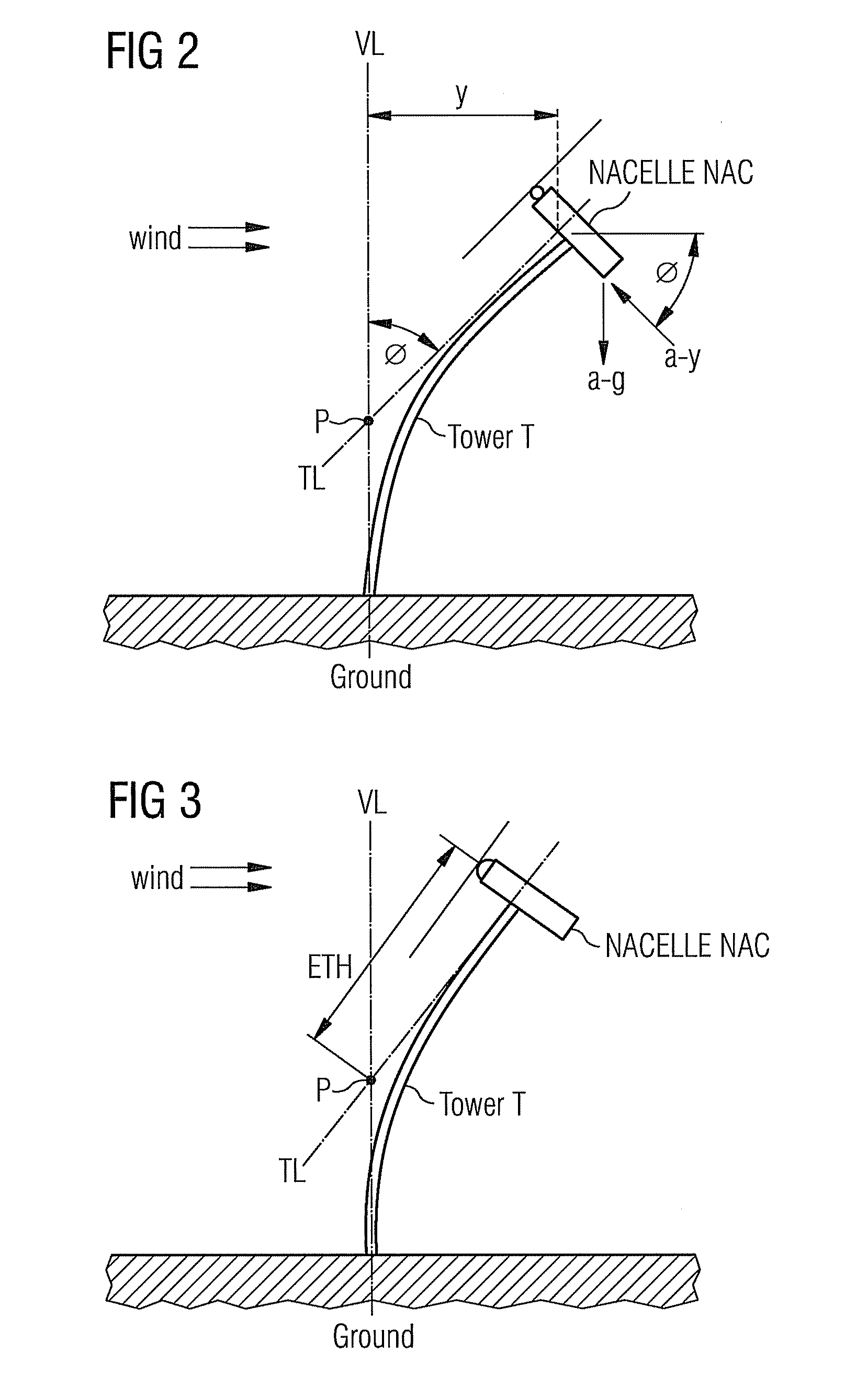Method for the determination of a nacelle-inclination
- Summary
- Abstract
- Description
- Claims
- Application Information
AI Technical Summary
Benefits of technology
Problems solved by technology
Method used
Image
Examples
Embodiment Construction
[0026]According to the invention an acceleration ACC of a nacelle is measured with help of an accelerometer ACM, which is mounted—for example—within or at the nacelle. A conventional two-axis-accelerometer can be used as accelerometer.
[0027]The measured acceleration is brought as first input-signal to a first difference-element DIF1.
[0028]An offset-value OV, which is necessary for calibration, is brought as second input-signal to the first difference-element DIF1.
[0029]For the calibration purposes the position of the nacelle and of their wind-blades too is changed in that kind, that the wind-forces on the nacelle are minimized and therefore the inclination is also minimized.
[0030]It is also possible, to use estimated, pre-calculated values as offset-value OV. The offset-value OV can be calculated based on mean values of the accelerometer-output, when the rotating propeller-blades of the nacelle are stopped as described above.
[0031]It is also possible to calculate the offset-value OV...
PUM
 Login to View More
Login to View More Abstract
Description
Claims
Application Information
 Login to View More
Login to View More - R&D
- Intellectual Property
- Life Sciences
- Materials
- Tech Scout
- Unparalleled Data Quality
- Higher Quality Content
- 60% Fewer Hallucinations
Browse by: Latest US Patents, China's latest patents, Technical Efficacy Thesaurus, Application Domain, Technology Topic, Popular Technical Reports.
© 2025 PatSnap. All rights reserved.Legal|Privacy policy|Modern Slavery Act Transparency Statement|Sitemap|About US| Contact US: help@patsnap.com



